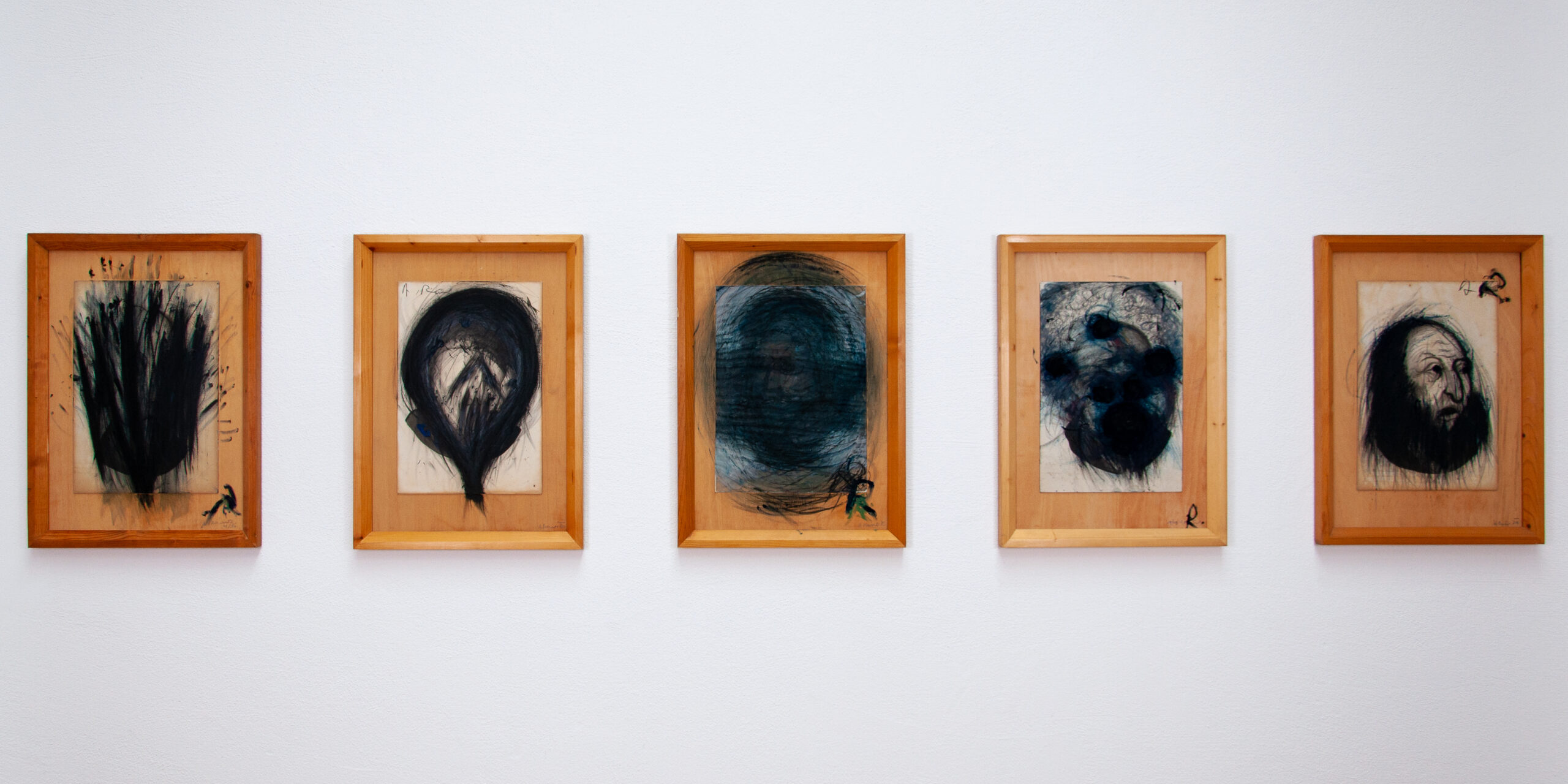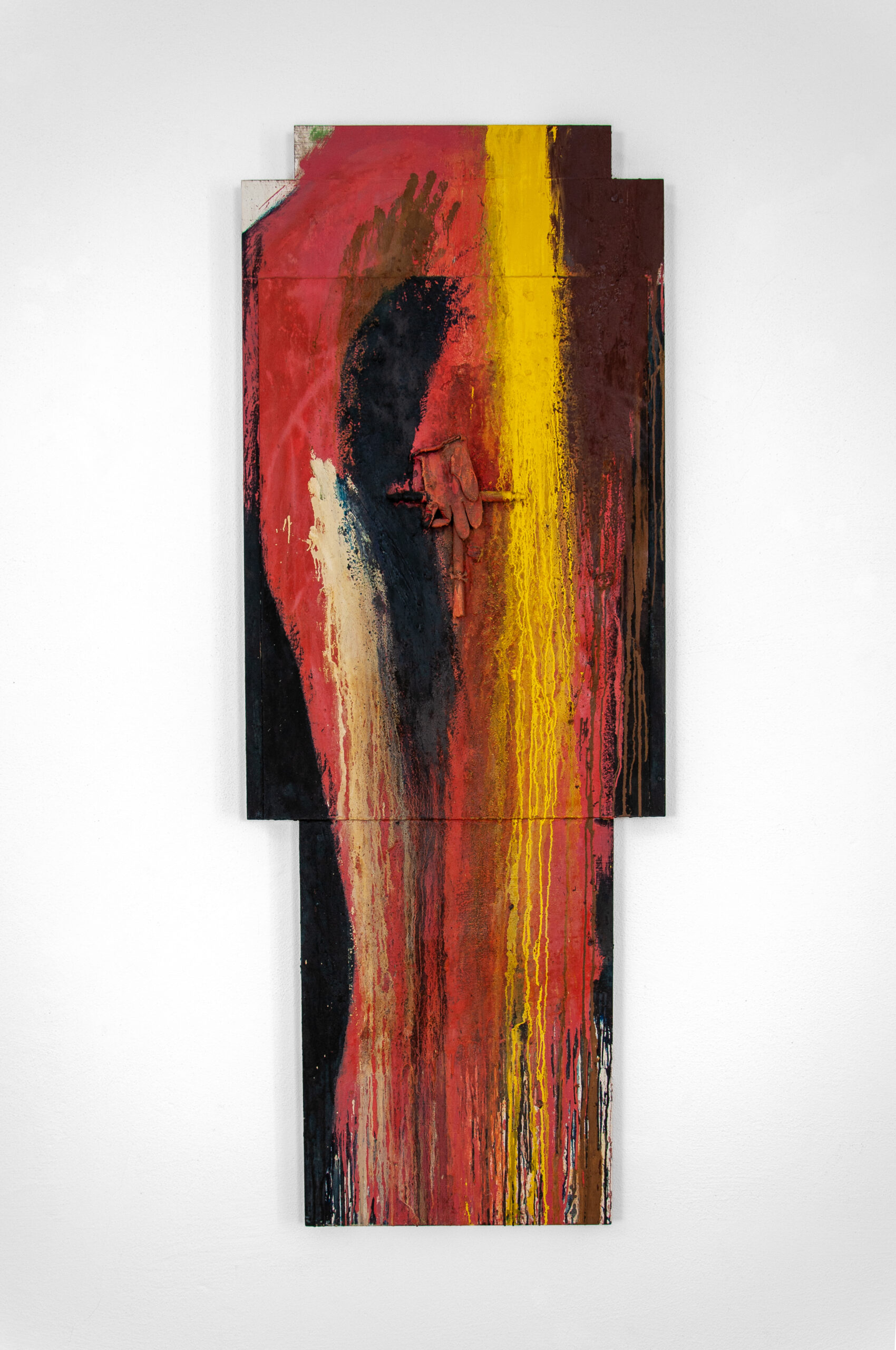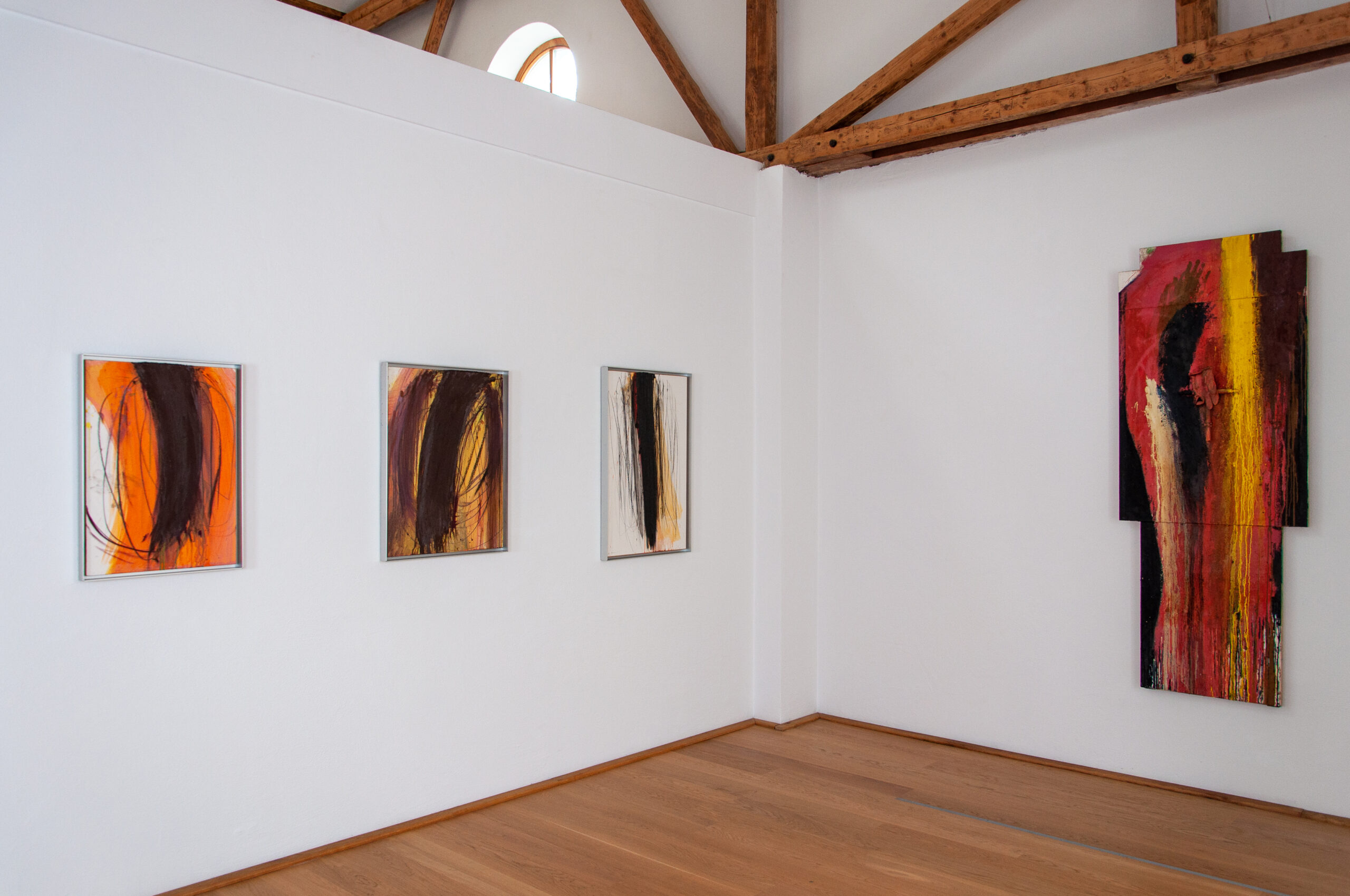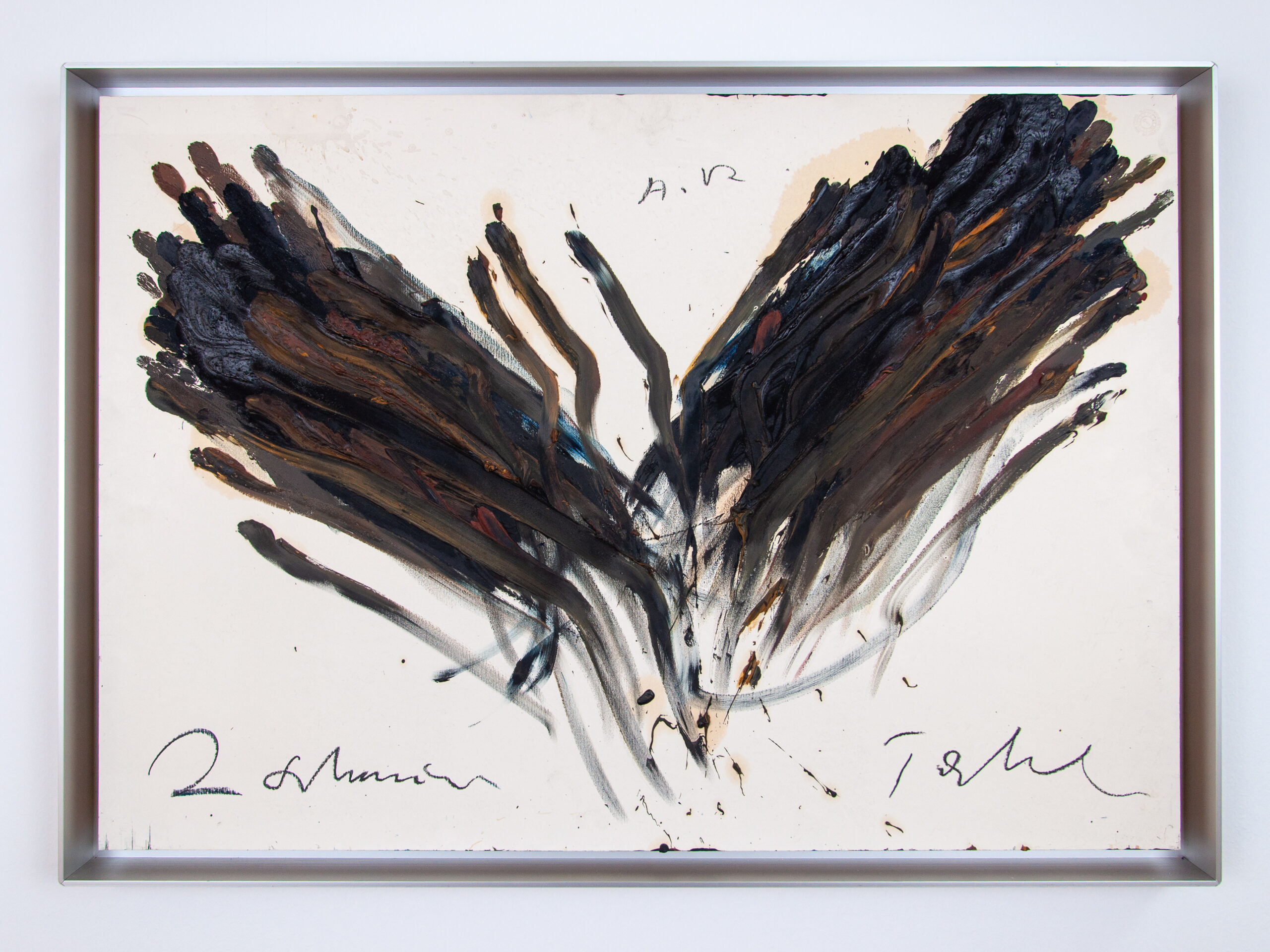Arnulf Rainer
Special exhibition
April 2023 - March 2024

Mugger (Series)
1979-1980
© VG Bild-Kunst, Bonn 2023.
Arnulf Rainer, born in Baden near Vienna in 1929, is not only one of Austria's best-known artists, but is also one of the most influential painters and draftsmen of the present day. He gained fame primarily through his overpaintings, which he established as a new art form.
As with all the artists shown at DASMAXIMUM, museum founder Heiner Friedrich and Arnulf Rainer are linked by decades of support for his work. Since Rainer's time in Munich at the end of the 1960s, there has been close contact, which culminated in the Arnulf Rainer Museum in New York, which was run by Friedrich's Ayn Foundation from 1993 to 1995. Heiner Friedrich has long wished to show Arnulf Rainer in his museum in Traunreut. On the initiative of the DASMAXIMUM Foundation's board of trustees, a cabinet exhibition of the Austrian artist's work has now been set up at DASMAXIMUM to mark Heiner Friedrich's 85th birthday.
Despite the intimate space, works from all of Rainer's important creative areas are represented. After his first Surrealist attempts in the immediate post-war period, Rainer discovered Informel painting on a trip to Paris, an art movement that rejected classical principles of form and composition and developed a picture out of the painting gesture. From the "reductions" and "Zudeckungen" of the early 1950s developed the first overpaintings of his own paintings. "For ten years after Surrealism, I strove for a negation of fantasy through concealment and overpainting," says Rainer. The focus is on an intense examination of the overpainted motif. The dissolution of conventional notions of painting finally led him to paint the body as a canvas.
But he also used the body as artistic material in other ways. Inspired by the facial expressions of mentally ill people, he began taking pictures of facial distortions and grimaces in public photo booths in 1968, the so-called "Face Farces". A little later he worked on expressive postures of the whole body, such as arm gestures, kneeling or sitting positions, the "Body Poses". Rainer reacted to the expressive content of facial expressions and gestures by intensively painting over these photographs. Beginning in the 1970s, Rainer also began to use other portraits and models for his face overpaintings. An impressive example of this is the series "Street Robbers," based on caricatures of well-known poets and writers from the 19th century. Using oil pastels and oil paint, he drastically exaggerates the expressiveness of the expression. He also created his first overpaintings of corpses, mummies or death masks, examples of which can also be seen in the exhibition. In these faces, the physiognomy has come to an absolute standstill and is virtually "revived" through painting.
Another important complex of Rainer's works, which is also shown in the exhibition, is hand and finger painting. In the mid-1970s, Rainer began to use his hand and fingers as painting tools for the first time after his brush broke off during a vigorous act of painting. In this way he could express himself much more directly on the canvas, the body itself became the painting instrument with which he could wipe, beat or slap the paint on the painting surface. In the 80s his finger painting became less aggressive, the trace of the fingers in the still wet paint now began to interest him.
Rainer finally combined all groups of themes - overpainting, finger painting, death and religion - in his cross paintings. The symmetrical form of the cross brings calm to Rainer's gestural and sometimes aggressive painting. The overpainting and "erasure" of the Christ figure in the center of the cross, or its replacement by a teddy bear as in the example in the exhibition, refers to the rejection of the Catholic Church, which was perceived as reactionary, as it was also reflected in the works of the Viennese Actionists with whom Rainer maintained close contacts at times.

Cross
1988
© VG Bild-Kunst, Bonn, 2023.
The special exhibition "Arnulf Rainer" can be seen at DASMAXIMUM in Traunreut until spring 2024.

Room View
© VG Bild-Kunst, Bonn 2023

